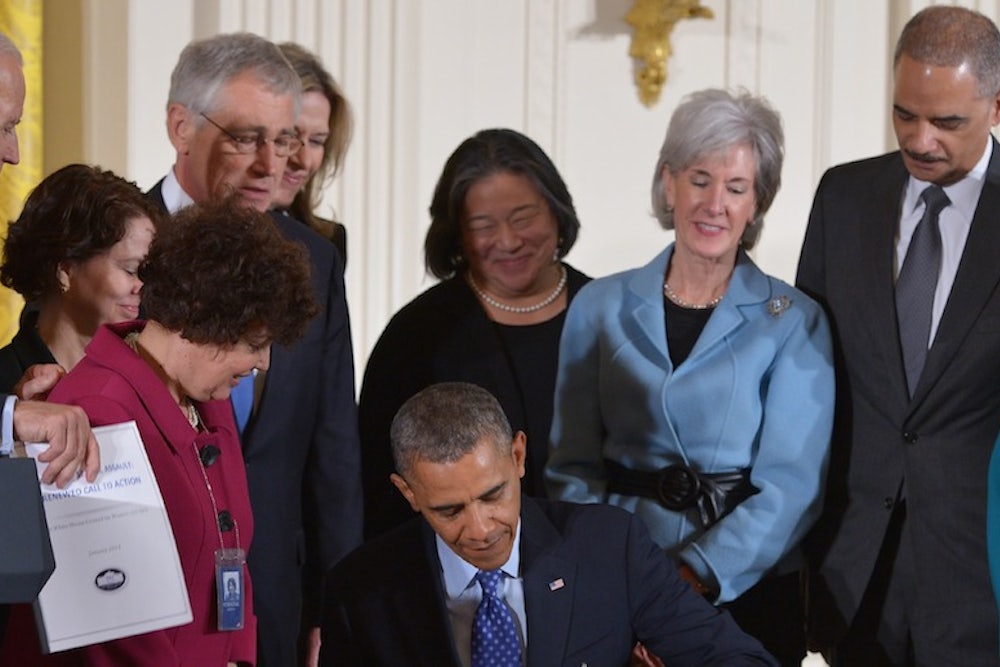The White House released a new set of recommendations on Monday to help colleges confront the high levels of sexual assault on their campuses. Already, there is talk that the administration will ask Congress to pass some of its guidelines into enforceable laws—but unless and until that happens, the suggestions don’t have binding power.
The administration will, however, make it easier for colleges to change their policies for the better. And it has promised to set up resources that will help rape survivors find help, regardless of their school’s approach to the problem. The report may be a relatively small step, but it’s an unprecedented one: No previous administration has created this kind of executive effort to address sexual violence. (Bill Clinton signed the 1994 Violence Against Women Act, but that was legislation written by then-Senator Joe Biden.) Experts told me in January that the panel behind the report took the most holistic approach to the problem any government group ever has.
And the panel's new guidelines echo some of the ideas these experts floated to me this winter. For one thing, many wanted to see a system for holding schools accountable when they mishandle rape on campus— for example, a public listing of the schools the Office for Civil Rights has investigated. The administration has published such a list on the new website it announced yesterday, NotAlone.gov. The site also has resources to help victims find nearby counseling and legal services—and to walk them through the process of filing a complaint.
The administration is also pushing schools to look more closely at their institutions' sexual culture. It’s at work on a “campus climate survey” that it will ask the schools to conduct next year. After that, the report says, “we will explore legislative or administrative options to require schools to conduct a survey in 2016”—boosting the pressure.
One of the things I heard most often from experts was that the administration should lay out a model judicial policy for schools struggling to reform their practices. The report promises to provide schools with “a model reporting and confidentiality protocol” and “a checklist for schools to use in drafting (or reevaluating) their own sexual misconduct policies.” It notes: “Although every school will need to tailor a policy to its own needs and circumstances, all schools should be sure to bring the key stakeholders—including students—to the table.”
Stories of college rape cases grossly mismanaged have been a constant presence in the media for years. This spring has been no exception: A group of students filed complaints against Columbia University last week; The New York Times uncovered a scuttled rape investigation at Florida State University the week before; and Dartmouth’s president, in a lightning-rod comment, said his school had been “hijacked by extreme behavior,” sexual misconduct included. Below is a crowded map, published by the Huffington Post in January, which shows the schools accused of mishandling sexual assault.
